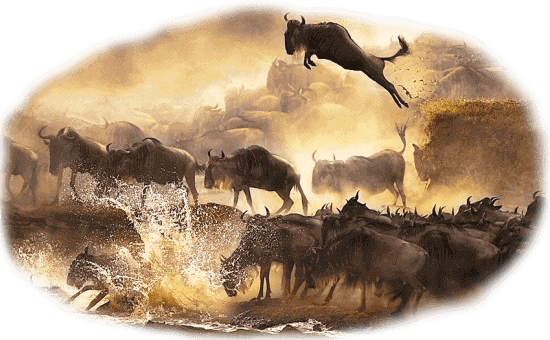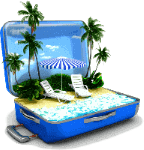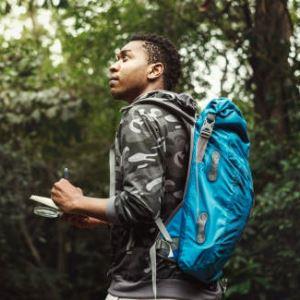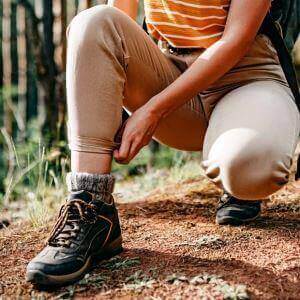 Kenya is a dream destination for many travelers, including those from Iceland. From the majestic savannahs of the Maasai Mara to the pristine beaches along the Indian Ocean, Kenya offers a rich blend of wildlife, culture, and adventure. This Kenya travel guide for Icelandic tourists is designed to help make your trip unforgettable, whether it’s your first safari or a return to the wild heart of Africa. For Icelanders used to long winters and dramatic landscapes, Kenya provides a warm and colorful escape. The best time to visit is during the dry seasons, from June to October and January to February. These months offer pleasant weather, minimal rainfall, and excellent wildlife viewing opportunities. If you're planning a safari, these seasons are ideal for spotting the Big Five and witnessing the Great Migration in the Maasai Mara. Getting to Kenya from Iceland usually involves connecting flights through major European hubs like Amsterdam, Frankfurt, or London. The journey can take anywhere from 13 to 18 hours, depending on your route. Once in Kenya, the international airports in Nairobi and Mombasa serve as the primary gateways. For Icelandic tourists, obtaining an eVisa is mandatory before arrival. The process is straightforward and can be completed online. Ensure your passport is valid for at least six months beyond your travel date. Kenya's safari parks are the country’s crown jewels. Icelandic travelers often favor the Maasai Mara for its dense wildlife and iconic scenes of lions lounging in the grasslands. Amboseli National Park, with its postcard-perfect views of Mount Kilimanjaro, and Lake Nakuru, known for its vibrant flamingo population, are also highly recommended. These experiences offer a striking contrast to Iceland’s volcanic terrain and glacial views. Cultural immersion is another highlight. Icelandic tourists will appreciate the vibrant markets, welcoming locals, and traditional Maasai villages. Respect for local customs goes a long way. Dress modestly, especially in rural areas, and always ask permission before photographing people. Safety in Kenya has improved, but it's best to travel with reputable tour companies and avoid isolated areas at night. Whether you're traveling solo, as a couple, or with family, Kenya promises a journey full of discovery and awe. From game drives across golden savannahs to cultural encounters in vibrant villages, each moment offers something uniquely enriching. Icelandic travelers, often seeking a change from glacial landscapes and cool temperatures, will find Kenya’s warmth both climatic and cultural deeply refreshing. With proper planning and local insight, your visit can be both safe and extraordinary. Booking through certified tour operators and staying updated with travel advisories ensures a smooth experience. For families, child-friendly safaris and beach resorts along the Kenyan coast provide added options. Solo travelers and couples can indulge in everything from luxury lodges to budget eco-camps. Below is an affordable Kenya travel guide from Iceland, making your dream African adventure well within reach. With the right preparation, your trip will not only be memorable but may also inspire future journeys to Africa’s most captivating destinations.
Kenya is a dream destination for many travelers, including those from Iceland. From the majestic savannahs of the Maasai Mara to the pristine beaches along the Indian Ocean, Kenya offers a rich blend of wildlife, culture, and adventure. This Kenya travel guide for Icelandic tourists is designed to help make your trip unforgettable, whether it’s your first safari or a return to the wild heart of Africa. For Icelanders used to long winters and dramatic landscapes, Kenya provides a warm and colorful escape. The best time to visit is during the dry seasons, from June to October and January to February. These months offer pleasant weather, minimal rainfall, and excellent wildlife viewing opportunities. If you're planning a safari, these seasons are ideal for spotting the Big Five and witnessing the Great Migration in the Maasai Mara. Getting to Kenya from Iceland usually involves connecting flights through major European hubs like Amsterdam, Frankfurt, or London. The journey can take anywhere from 13 to 18 hours, depending on your route. Once in Kenya, the international airports in Nairobi and Mombasa serve as the primary gateways. For Icelandic tourists, obtaining an eVisa is mandatory before arrival. The process is straightforward and can be completed online. Ensure your passport is valid for at least six months beyond your travel date. Kenya's safari parks are the country’s crown jewels. Icelandic travelers often favor the Maasai Mara for its dense wildlife and iconic scenes of lions lounging in the grasslands. Amboseli National Park, with its postcard-perfect views of Mount Kilimanjaro, and Lake Nakuru, known for its vibrant flamingo population, are also highly recommended. These experiences offer a striking contrast to Iceland’s volcanic terrain and glacial views. Cultural immersion is another highlight. Icelandic tourists will appreciate the vibrant markets, welcoming locals, and traditional Maasai villages. Respect for local customs goes a long way. Dress modestly, especially in rural areas, and always ask permission before photographing people. Safety in Kenya has improved, but it's best to travel with reputable tour companies and avoid isolated areas at night. Whether you're traveling solo, as a couple, or with family, Kenya promises a journey full of discovery and awe. From game drives across golden savannahs to cultural encounters in vibrant villages, each moment offers something uniquely enriching. Icelandic travelers, often seeking a change from glacial landscapes and cool temperatures, will find Kenya’s warmth both climatic and cultural deeply refreshing. With proper planning and local insight, your visit can be both safe and extraordinary. Booking through certified tour operators and staying updated with travel advisories ensures a smooth experience. For families, child-friendly safaris and beach resorts along the Kenyan coast provide added options. Solo travelers and couples can indulge in everything from luxury lodges to budget eco-camps. Below is an affordable Kenya travel guide from Iceland, making your dream African adventure well within reach. With the right preparation, your trip will not only be memorable but may also inspire future journeys to Africa’s most captivating destinations.
Key Kenya Travel Insights for Icelandic Travelers
| Travel Tip Category | Details for Icelandic Tourists |
|---|---|
| Best Travel Time | June to October; January to February |
| Top Safari Parks | Maasai Mara, Amboseli, Lake Nakuru |
| Visa Requirement | eVisa required; apply online before travel |
| Safety Advice | Use trusted tours, avoid night walks, be culturally aware |
| Local Language Tip | Learn basic Swahili like "Jambo" (Hello), "Asante" (Thanks) |
Best Time To Visit Kenya For Icelandic Travelers And Climate Tips
Kenya offers a rich tapestry of climates, and understanding the best time to visit can help Icelandic travelers plan an unforgettable journey. With its diverse geography ranging from highlands to coastal plains, Kenya presents unique seasonal patterns that contrast significantly with Iceland's cooler temperatures and darker winters. For Icelanders looking to escape the cold, Kenya's dry seasons from June to October and January to February are ideal for travel. During these dry months, rainfall is minimal, making wildlife more visible as animals gather near water sources. This is the perfect time for game drives in world-famous parks like the Maasai Mara and Amboseli. The roads are more navigable, the skies are clearer for photography, and malaria-carrying mosquitoes are less prevalent. These factors contribute to a safer and more comfortable travel experience. The Great Migration typically occurs between July and October in the Maasai Mara, offering a once-in-a-lifetime opportunity to witness nature's most awe-inspiring spectacle. For Icelandic visitors, this aligns well with the Icelandic summer holiday calendar, making it a convenient time to travel. Kenya's coastal regions also shine during the dry seasons. The beaches of Diani, Watamu, and Malindi become tranquil paradises with warm waters and bright sunshine a stark contrast to Iceland’s rugged coastlines. These areas are perfect for relaxation after an adventurous safari. It’s important to note that while Kenya's equatorial climate means relatively stable temperatures year-round, highland areas like Nairobi and the Central Highlands can be cooler, especially in the mornings and evenings. Packing layers is advisable for Icelandic tourists to adapt to the fluctuating temperatures. In contrast, the wet seasons from March to May and November to early December bring lush green landscapes and fewer tourists. Although game viewing can be more challenging due to thicker vegetation and slippery roads, the low tourist numbers and discounted travel packages might appeal to those looking for a more secluded experience. Regardless of when you choose to travel, understanding regional climates can help tailor your itinerary. Planning activities around weather conditions maximizes your experience, whether it's a sunrise hike up Mount Kenya or an afternoon snorkel along the Indian Ocean coast. For those seeking sunshine, wildlife, and cultural encounters far removed from Iceland's icy expanses, the best time to visit Kenya from Iceland is undoubtedly during its dry seasons. These months not only provide the best safari conditions but also allow travelers from Iceland to soak in Kenya's warmth and natural wonders at their peak.
What Is The Ideal Season In Kenya For Tourists From Iceland?
For Icelandic tourists seeking an ideal time to explore Kenya, the dry seasons from June to October and January to February offer the most rewarding experience. These months provide optimal weather conditions for wildlife viewing and comfortable travel. During the dry season, the weather is warm but not overly humid, and the skies remain mostly clear perfect for game drives and sightseeing. Icelanders escaping long winters will find the Kenyan sunshine a welcome contrast. The Maasai Mara National Reserve is at its most active between July and October, during the Great Migration. This incredible event sees millions of wildebeests, zebras, and other animals moving through the plains, attracting predators and creating unmatched safari spectacles. For many visitors from Iceland, this aligns perfectly with summer vacation periods, adding convenience to the adventure. Kenya's coast, including popular destinations like Diani Beach and Watamu, also shines in the dry season. These months offer the best beach weather, with warm ocean waters and minimal rain, ideal for snorkeling, swimming, and sunbathing. Icelandic tourists can enjoy sun-drenched coastlines, sip coconut water under palm trees, or take a dhow cruise on the calm waters of the Indian Ocean. With average temperatures ranging between 25°C and 30°C, it’s a pleasant break from Iceland's often cool and windy coasts. Many coastal resorts also offer cultural excursions, such as visiting historic Swahili towns, exploring local marine parks, or even taking part in traditional cooking classes. This region presents a more relaxed pace compared to the thrill of inland safaris, making it an excellent balance for travelers seeking both adventure and leisure. While Kenya's equatorial climate supports year-round travel, the best time to travel to Kenya is unquestionably during its dry seasons when both wildlife and weather are at their finest. Whether you choose to relax on white-sand beaches or dive into coral-rich waters, the Kenyan coast is an essential part of the journey and a highlight for Icelandic tourists seeking sunshine and serenity.
Top Kenyan Safari Destinations Loved By Icelandic Tourists
 Kenya stands out as one of the most iconic safari destinations in Africa, drawing wildlife enthusiasts from around the world including a growing number of travelers from Iceland. For Icelandic tourists used to glacial landscapes and Arctic wildlife, Kenya’s vibrant savannahs, sun-soaked national parks, and unmatched biodiversity present a welcome contrast and a thrilling adventure. The Maasai Mara National Reserve is undoubtedly the crown jewel of Kenya's safari experience. Known globally for the Great Migration, it offers an extraordinary opportunity to witness over a million wildebeests and zebras cross the plains in search of greener pastures, pursued by lions, cheetahs, and crocodiles. For Icelandic visitors, this epic natural event is a once-in-a-lifetime spectacle and often the highlight of their Kenyan itinerary. Amboseli National Park, located near the Tanzanian border, is another favorite. Its panoramic views of Mount Kilimanjaro provide a breathtaking backdrop to sightings of elephants, giraffes, and lions. The open plains and marshy swamps make for rewarding game drives, and photography enthusiasts from Iceland are especially drawn to its cinematic landscapes. Lake Nakuru National Park, nestled in the Great Rift Valley, offers a different but equally captivating safari setting. Famous for its flocks of flamingos and a variety of bird species, the park is also home to rhinos, leopards, and baboons. The contrast between the volcanic scenery of Iceland and the lush lakeside vistas of Nakuru adds to the park’s appeal. For a more remote experience, Icelandic travelers may venture to Samburu National Reserve in northern Kenya. Less crowded than the more famous parks, Samburu features unique wildlife species such as the Grevy's zebra, Somali ostrich, and reticulated giraffe. The arid beauty of this region resonates with Icelanders familiar with stark, dramatic landscapes. Many tour operators now offer tailored Kenya safari tours for Icelandic tourists, complete with Icelandic-speaking guides and curated packages that fit seasonal travel preferences. These guided experiences help bridge language and cultural gaps while ensuring a smooth and enriching journey. From luxury lodges to eco-friendly camps, accommodations are varied and accessible to all travel styles. Kenya’s safari destinations offer Icelandic visitors not only the thrill of big game but also a deep connection to nature and a broadened global perspective. The experience goes beyond viewing wildlife; it invites travelers into the rhythms of the wild, where every sunrise and sunset offers a new spectacle of life on the savannah. Whether it's the powerful roar of a lion in the early dawn or the graceful march of elephants in the golden light of dusk, each moment resonates deeply with those unfamiliar with Africa's vast wilderness. For Icelandic tourists, who come from a country with few land mammals and a landscape shaped by ice and fire, Kenya offers a compelling visual and emotional contrast. The vivid colors, diverse animals, and rich cultural encounters create an unforgettable narrative of discovery. Many visitors also find that their time in Kenya shifts their perspective, fostering a greater appreciation for wildlife conservation and the interconnectedness of global ecosystems. Whether you're tracking lions in the Mara, watching elephants roam beneath Kilimanjaro, or enjoying quiet reflection at a bush camp under starlit skies, a Kenyan safari delivers memories that will last a lifetime. It is an immersive journey that leaves Icelandic travelers inspired, enlightened, and yearning to return.
Kenya stands out as one of the most iconic safari destinations in Africa, drawing wildlife enthusiasts from around the world including a growing number of travelers from Iceland. For Icelandic tourists used to glacial landscapes and Arctic wildlife, Kenya’s vibrant savannahs, sun-soaked national parks, and unmatched biodiversity present a welcome contrast and a thrilling adventure. The Maasai Mara National Reserve is undoubtedly the crown jewel of Kenya's safari experience. Known globally for the Great Migration, it offers an extraordinary opportunity to witness over a million wildebeests and zebras cross the plains in search of greener pastures, pursued by lions, cheetahs, and crocodiles. For Icelandic visitors, this epic natural event is a once-in-a-lifetime spectacle and often the highlight of their Kenyan itinerary. Amboseli National Park, located near the Tanzanian border, is another favorite. Its panoramic views of Mount Kilimanjaro provide a breathtaking backdrop to sightings of elephants, giraffes, and lions. The open plains and marshy swamps make for rewarding game drives, and photography enthusiasts from Iceland are especially drawn to its cinematic landscapes. Lake Nakuru National Park, nestled in the Great Rift Valley, offers a different but equally captivating safari setting. Famous for its flocks of flamingos and a variety of bird species, the park is also home to rhinos, leopards, and baboons. The contrast between the volcanic scenery of Iceland and the lush lakeside vistas of Nakuru adds to the park’s appeal. For a more remote experience, Icelandic travelers may venture to Samburu National Reserve in northern Kenya. Less crowded than the more famous parks, Samburu features unique wildlife species such as the Grevy's zebra, Somali ostrich, and reticulated giraffe. The arid beauty of this region resonates with Icelanders familiar with stark, dramatic landscapes. Many tour operators now offer tailored Kenya safari tours for Icelandic tourists, complete with Icelandic-speaking guides and curated packages that fit seasonal travel preferences. These guided experiences help bridge language and cultural gaps while ensuring a smooth and enriching journey. From luxury lodges to eco-friendly camps, accommodations are varied and accessible to all travel styles. Kenya’s safari destinations offer Icelandic visitors not only the thrill of big game but also a deep connection to nature and a broadened global perspective. The experience goes beyond viewing wildlife; it invites travelers into the rhythms of the wild, where every sunrise and sunset offers a new spectacle of life on the savannah. Whether it's the powerful roar of a lion in the early dawn or the graceful march of elephants in the golden light of dusk, each moment resonates deeply with those unfamiliar with Africa's vast wilderness. For Icelandic tourists, who come from a country with few land mammals and a landscape shaped by ice and fire, Kenya offers a compelling visual and emotional contrast. The vivid colors, diverse animals, and rich cultural encounters create an unforgettable narrative of discovery. Many visitors also find that their time in Kenya shifts their perspective, fostering a greater appreciation for wildlife conservation and the interconnectedness of global ecosystems. Whether you're tracking lions in the Mara, watching elephants roam beneath Kilimanjaro, or enjoying quiet reflection at a bush camp under starlit skies, a Kenyan safari delivers memories that will last a lifetime. It is an immersive journey that leaves Icelandic travelers inspired, enlightened, and yearning to return.
Which Are The Most Popular Safari Parks In Kenya For Icelanders?
Kenya is a land of captivating contrasts and thrilling adventures, making it an increasingly popular destination for tourists from Iceland. From sweeping savannahs filled with wildlife to serene lakeside parks and cultural encounters, Kenya offers experiences vastly different from Iceland’s icy terrains and volcanic landscapes. If you're planning a trip and wondering where to go, here are some of the best places in Kenya to visit. Each destination brings a unique charm and unforgettable memories for Icelandic travelers.
- Maasai Mara National Reserve: Famed for the Great Migration, Maasai Mara is a must-visit. Between July and October, Icelandic tourists can witness a sea of wildebeests and zebras crossing plains in search of fresh grazing. It's also home to the Big Five and delivers thrilling game drives in vast open spaces. Professional guides and luxurious lodges enhance the experience, making it an excellent introduction to Kenya’s wildlife scene.
- Amboseli National Park: Located at the foot of Mount Kilimanjaro, Amboseli is a haven for elephant lovers and photography enthusiasts. Clear skies and open plains make wildlife viewing ideal. The park’s proximity to Tanzania and iconic views of snow-capped Kilimanjaro make it a visual treat, contrasting dramatically with Iceland’s volcanic mountain ranges.
- Lake Nakuru National Park: Known for its flamingos and rhino sanctuary, Lake Nakuru is perfect for birdwatchers and conservation-focused tourists. Its alkaline lake draws thousands of birds, while the surrounding acacia forest and waterfalls offer diverse ecosystems. This is a quieter, more intimate safari experience that balances out the more popular, bustling reserves.
- Samburu National Reserve: For a less crowded but equally enriching adventure, Samburu in northern Kenya is ideal. Here, Icelanders can encounter unique species like the Grevy's zebra and reticulated giraffe. The arid, rugged terrain also mirrors Iceland’s dramatic landscapes, creating a sense of familiarity amid the African wild.
- Tsavo East and West National Parks: Together forming one of the largest protected wilderness areas in Kenya, Tsavo offers vast landscapes, red-dust elephants, and off-the-beaten-path experiences. For Icelandic travelers seeking a deeper, more remote encounter with nature, Tsavo delivers unmatched scale and solitude.
These safari parks showcase the incredible diversity Kenya has to offer. The best places to visit in Kenya from Iceland combine wildlife, dramatic scenery, and unique culture. With each park offering its own flavor, Icelandic tourists are sure to return home with stories and memories that last a lifetime.
Travel Requirements And Visa Information For Icelanders In Kenya
Traveling from Iceland to Kenya requires some preparation, especially when it comes to entry requirements and important travel documentation. Fortunately, the process is straightforward for Icelandic citizens. To enter Kenya for tourism, Icelandic travelers must obtain an eVisa prior to arrival. This electronic visa can be applied for through Kenya's official eVisa portal and should be secured well in advance of travel. The application process is simple. Applicants need to fill out a form online, upload a passport-size photo, provide a scanned copy of their passport, and pay a fee using a valid debit or credit card. Most applications are processed within two to three business days. Once approved, the eVisa is emailed to the applicant, who must print and carry a copy when traveling. Your passport must be valid for at least six months beyond your planned entry date and have at least one blank page for immigration stamps. Alongside the eVisa, travelers may be asked to show proof of return or onward travel, proof of accommodation, and sufficient funds to cover their stay. In addition to the visa, it's advised that travelers consult their healthcare provider about vaccinations and health precautions. Common recommendations include vaccines for yellow fever, hepatitis A, typhoid, and routine immunizations. A yellow fever certificate may be required if you're arriving from or transiting through countries where yellow fever is present. When it comes to money, Kenya's currency is the Kenyan Shilling (KES), and while major hotels and establishments accept credit cards, carrying some local cash is helpful, especially in rural areas. Currency can be exchanged at the airport, major banks, or licensed exchange bureaus. Connectivity is widely available in Kenya's urban centers and tourist regions. Buying a local SIM card with mobile data is cost-effective and convenient for navigation, translation, and staying in touch. As with any international trip, travel insurance is essential. It should cover medical emergencies, trip cancellations, and loss of personal items. Choosing a plan that includes emergency evacuation is also a wise decision given the remoteness of some safari destinations. Understanding these travel protocols and preparing in advance will help ensure a stress-free and enjoyable travel experience. Whether you're planning to explore the bustling capital of Nairobi, trek through national parks, or relax on the coast, being informed about Kenya visa requirements for Icelandic citizens is key to a smooth entry and a memorable journey. Advance preparation not only eliminates last-minute stress but also allows you to make the most of your time in Kenya. Keeping both digital and physical copies of your visa and other travel documents handy is highly recommended. It's useful to register with Iceland's foreign travel advisory service before departure. This step ensures that your embassy can assist you more efficiently in case of an emergency while abroad. Be aware of local laws and customs, and maintain respectful behavior when interacting with locals. Having some knowledge of Kenya’s geography and travel logistics like distances between parks and modes of transport will also make your journey smoother. Always verify the latest travel requirements closer to your travel date, as immigration rules and health protocols can change. By staying informed and prepared, Icelandic tourists can enjoy a seamless, enriching, and safe travel experience in Kenya.
Do Icelandic Citizens Need A Visa To Travel To Kenya For Tourism?
Yes, Icelandic citizens do need a visa to travel to Kenya for tourism purposes. Kenya requires all foreign nationals, including those from Iceland, to obtain an electronic visa (eVisa) before arrival. The eVisa system simplifies the application process and can be accessed through Kenya's official immigration website. To apply, Icelandic travelers must complete an online form, upload a passport-sized photo and a scan of their valid passport, and pay a processing fee. The approval process typically takes two to three working days. Once approved, the eVisa is emailed to the applicant and must be printed for presentation upon arrival in Kenya. The visa is valid for 90 days and allows for a single entry. It's essential that passports be valid for at least six months beyond the date of entry and have at least one blank page for stamps. Travelers should be prepared to show proof of return or onward travel, confirmed accommodation bookings, and sufficient funds for the duration of their stay. It is advisable to complete the visa application at least one week before departure to allow for any unforeseen delays. Being aware of Kenya's visa requirements for Icelandic citizens ensures a smoother entry process and helps avoid travel disruptions. Icelandic tourists planning to explore Kenya's national parks, beaches, and cultural attractions will find that securing the necessary travel documentation in advance allows for a more relaxed and enjoyable trip. Taking the time to prepare all travel documents before departure can reduce stress and make border control smoother upon arrival. It is advisable to keep both printed and digital copies of your eVisa and supporting documents readily accessible during your journey. This can be especially helpful when passing through immigration or checking into accommodations. Icelandic travelers are also encouraged to register with Iceland’s foreign travel advisory service, which enhances communication and safety support while abroad. Understanding local laws, customs, and general etiquette will go a long way in ensuring a positive experience. With thoughtful planning, a trip to Kenya can be both enriching and worry-free.
Cultural Tips And Safety Advice For Iceland Tourists Visiting Kenya
 Kenya offers not only breathtaking landscapes and wildlife but also a vibrant cultural experience for Icelandic travelers. Icelanders visiting Kenya will find a dynamic mix of traditions, languages, music, and food that make every encounter special. From the moment you arrive, the warmth of the Kenyan people and their strong sense of community are immediately noticeable. One of the most rewarding cultural experiences in Kenya for Icelanders is visiting Maasai villages. These encounters allow visitors to learn about Maasai customs, traditional attire, and pastoral lifestyles that have remained largely unchanged for centuries. Icelandic tourists, often fascinated by indigenous traditions, will appreciate the opportunity to witness authentic dances, crafts, and rituals up close. Always ask for permission before taking photos and consider supporting local artisans by purchasing handmade souvenirs. Markets in cities like Nairobi and Mombasa are lively hubs of culture. Here, you can sample Kenyan cuisine such as ugali, nyama choma, and chapati, or try tropical fruits unfamiliar to Icelandic palates. These open-air spaces are perfect for practicing basic Swahili phrases, which locals appreciate and respond to warmly. When it comes to attire, Icelandic visitors should be mindful of dressing modestly, especially in rural areas and places of worship. Light, breathable clothing is ideal, but covering shoulders and knees shows cultural respect. In coastal regions with significant Muslim populations, modesty is particularly important. Safety is generally manageable with common-sense precautions. Icelandic travelers are advised to stay in well-reviewed accommodations, avoid walking alone after dark, and use licensed taxi services or trusted transportation apps. While Kenya is a relatively safe country for tourists, staying updated with local news and travel advisories adds an extra layer of security. Joining a local guided tour is a fantastic way to gain cultural insights while ensuring safety. Many reputable tour operators now offer packages designed with Icelandic travelers in mind, including Icelandic-speaking guides and customized itineraries. Cultural respect, open-mindedness, and genuine curiosity can turn a good trip into a transformative one. Whether you're attending a traditional wedding, tasting spiced tea in a family home, or exchanging stories with local guides, every interaction enriches your travel experience. Kenya's multicultural identity shaped by over 40 ethnic groups offers endless opportunities for learning and connection. Icelandic tourists who approach Kenya with cultural sensitivity and enthusiasm are likely to leave with not just beautiful photos, but deeper understanding and lasting memories. By participating in cultural events, engaging respectfully with locals, and showing genuine interest in Kenyan traditions, Icelanders can gain insights that go beyond the surface of tourism. Whether it’s sharing a laugh with a local guide, dancing to traditional music at a village celebration, or trying your hand at Swahili cooking, each experience adds a meaningful layer to your journey. These moments of connection often leave a lasting emotional impact, giving visitors a new appreciation for the diversity of the world. Kenya's multicultural society, shaped by more than 40 distinct ethnic groups, offers a kaleidoscope of traditions, languages, and beliefs to explore. When Icelandic travelers embrace these opportunities with open hearts and minds, they enrich not only their vacation but also their understanding of global cultures. Such travel fosters mutual respect, inspires deeper human connection, and creates stories that stay with you long after you've returned to the quiet fjords and northern lights of Iceland.
Kenya offers not only breathtaking landscapes and wildlife but also a vibrant cultural experience for Icelandic travelers. Icelanders visiting Kenya will find a dynamic mix of traditions, languages, music, and food that make every encounter special. From the moment you arrive, the warmth of the Kenyan people and their strong sense of community are immediately noticeable. One of the most rewarding cultural experiences in Kenya for Icelanders is visiting Maasai villages. These encounters allow visitors to learn about Maasai customs, traditional attire, and pastoral lifestyles that have remained largely unchanged for centuries. Icelandic tourists, often fascinated by indigenous traditions, will appreciate the opportunity to witness authentic dances, crafts, and rituals up close. Always ask for permission before taking photos and consider supporting local artisans by purchasing handmade souvenirs. Markets in cities like Nairobi and Mombasa are lively hubs of culture. Here, you can sample Kenyan cuisine such as ugali, nyama choma, and chapati, or try tropical fruits unfamiliar to Icelandic palates. These open-air spaces are perfect for practicing basic Swahili phrases, which locals appreciate and respond to warmly. When it comes to attire, Icelandic visitors should be mindful of dressing modestly, especially in rural areas and places of worship. Light, breathable clothing is ideal, but covering shoulders and knees shows cultural respect. In coastal regions with significant Muslim populations, modesty is particularly important. Safety is generally manageable with common-sense precautions. Icelandic travelers are advised to stay in well-reviewed accommodations, avoid walking alone after dark, and use licensed taxi services or trusted transportation apps. While Kenya is a relatively safe country for tourists, staying updated with local news and travel advisories adds an extra layer of security. Joining a local guided tour is a fantastic way to gain cultural insights while ensuring safety. Many reputable tour operators now offer packages designed with Icelandic travelers in mind, including Icelandic-speaking guides and customized itineraries. Cultural respect, open-mindedness, and genuine curiosity can turn a good trip into a transformative one. Whether you're attending a traditional wedding, tasting spiced tea in a family home, or exchanging stories with local guides, every interaction enriches your travel experience. Kenya's multicultural identity shaped by over 40 ethnic groups offers endless opportunities for learning and connection. Icelandic tourists who approach Kenya with cultural sensitivity and enthusiasm are likely to leave with not just beautiful photos, but deeper understanding and lasting memories. By participating in cultural events, engaging respectfully with locals, and showing genuine interest in Kenyan traditions, Icelanders can gain insights that go beyond the surface of tourism. Whether it’s sharing a laugh with a local guide, dancing to traditional music at a village celebration, or trying your hand at Swahili cooking, each experience adds a meaningful layer to your journey. These moments of connection often leave a lasting emotional impact, giving visitors a new appreciation for the diversity of the world. Kenya's multicultural society, shaped by more than 40 distinct ethnic groups, offers a kaleidoscope of traditions, languages, and beliefs to explore. When Icelandic travelers embrace these opportunities with open hearts and minds, they enrich not only their vacation but also their understanding of global cultures. Such travel fosters mutual respect, inspires deeper human connection, and creates stories that stay with you long after you've returned to the quiet fjords and northern lights of Iceland.
What Should Icelandic Tourists Know About Kenya's Culture And Safety?
When visiting Kenya, Icelandic tourists will encounter a culturally diverse and vibrant society, offering countless opportunities for meaningful interactions. Kenya is home to over 40 ethnic groups, each with unique traditions, languages, and ways of life. For Icelanders, this is a chance to learn about a world vastly different from their own, making cultural sensitivity essential throughout the journey. One of the first things to understand is the importance of greeting people with respect. A handshake and friendly exchange are customary, and learning basic Swahili greetings such as "Jambo" (Hello) and "Asante" (Thank you) can create warm connections. In rural areas and among elders, respectful communication is highly valued. Icelandic visitors should always ask for permission before photographing individuals, particularly in local markets or tribal communities. Clothing choices also matter. Modest dress is recommended, especially when visiting villages or religious sites. Light, breathable fabrics are ideal for the climate, but covering shoulders and knees is a sign of cultural awareness. In coastal regions like Mombasa, where the Muslim population is prominent, this is even more important. On the topic of safety, Kenya is generally welcoming to tourists, but it’s wise to exercise common travel precautions. Avoid displaying expensive items in public, don’t walk alone at night, and use registered taxis or trusted ride-hailing apps. Staying in reputable accommodations and booking tours through established operators adds a layer of security and local insight. Joining cultural tours led by local guides is an excellent way to explore Kenya’s traditions safely and respectfully. These experiences can include village visits, cooking classes, music and dance performances, or storytelling sessions around the campfire. Each of these interactions allows Icelandic tourists to better understand Kenyan heritage while supporting local communities. Cultural experiences are often the most memorable aspects of their travels. The warmth of the people, the rhythm of traditional music, the flavors of regional cuisine, and the powerful stories shared by locals create lasting impressions that go beyond sightseeing. By showing openness and humility, Icelandic travelers not only enjoy a richer experience but also contribute to mutual understanding and respect between cultures. Embracing cultural etiquette and prioritizing safety will ensure a rewarding journey. Kenya invites Icelandic tourists to explore not just its landscapes but also its heart through its people, customs, and shared humanity. This blend of culture and courtesy transforms an ordinary vacation into a life-enriching adventure.






